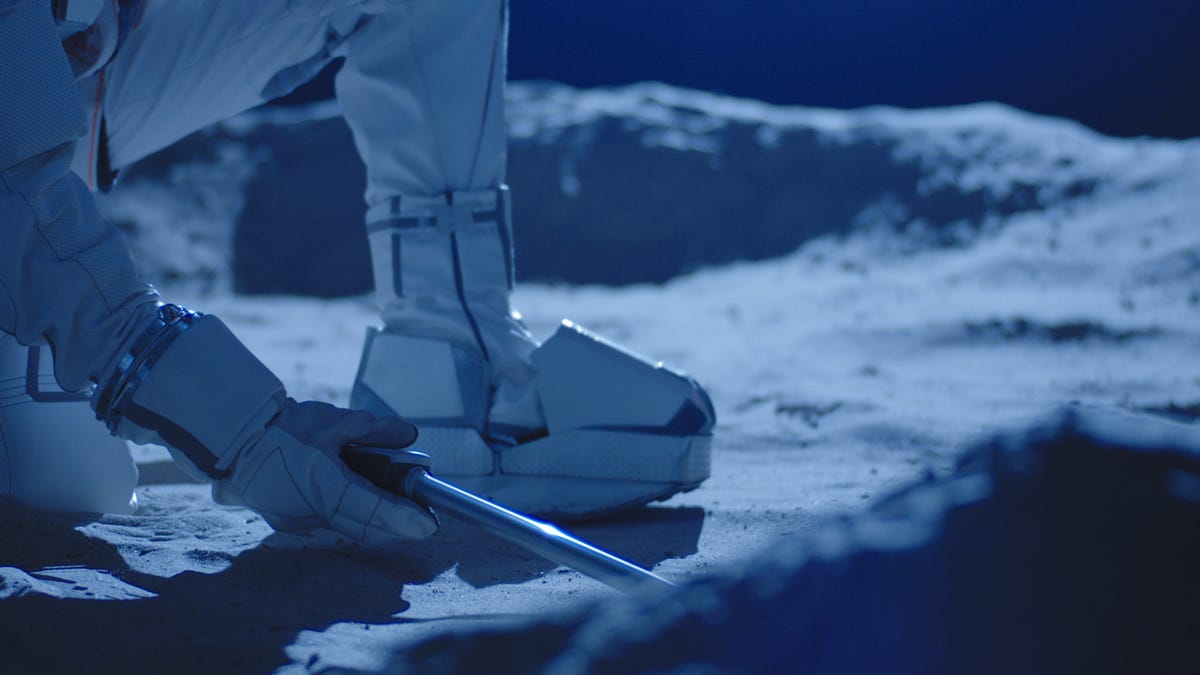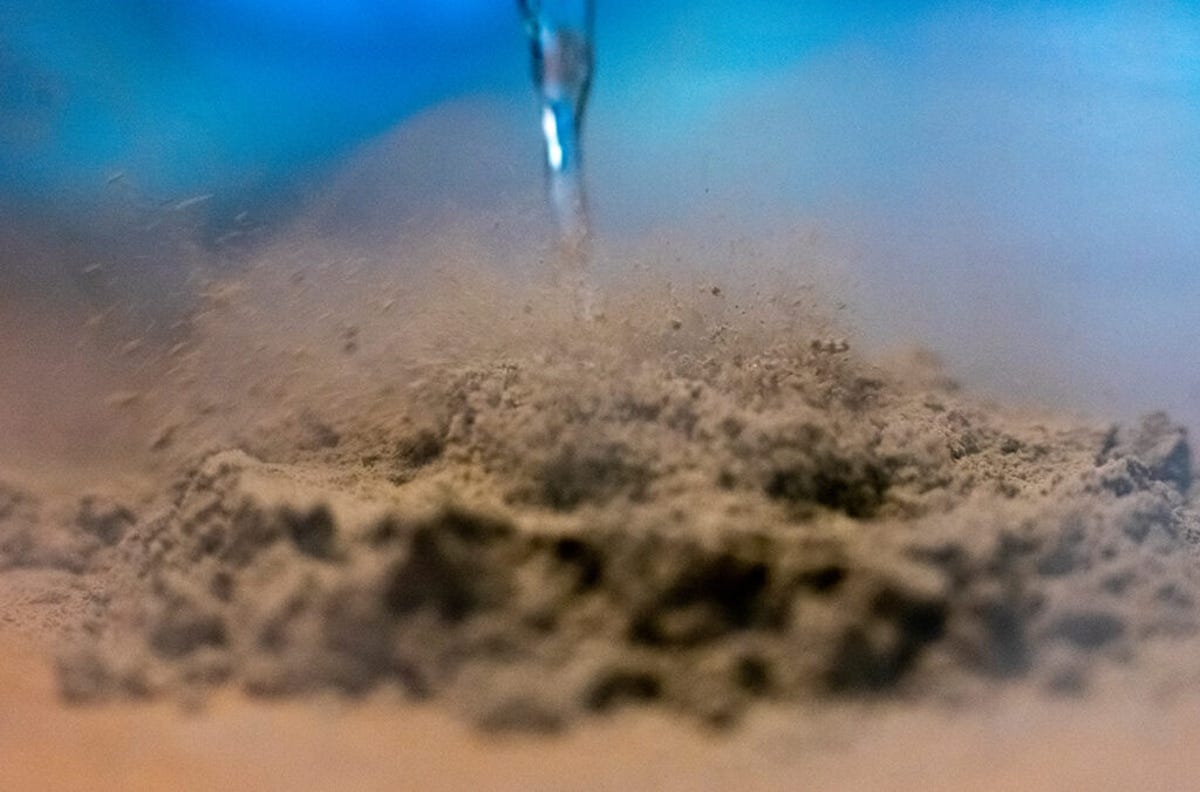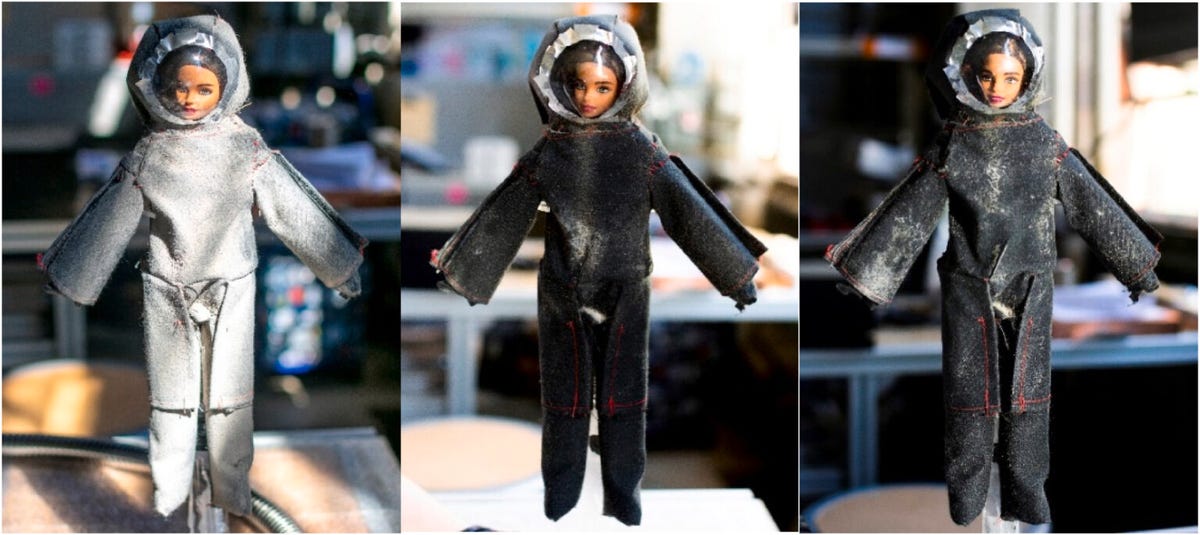
Dealing with moon dust is worse than dealing with packing peanuts, basically.
Getty Images
In 2025, NASA plans to land a crew of humans on the moon for the first time since 1972. But before these brave astronauts get there, scientists here on Earth are trying to figure out how to solve one major problem revealed during the agency’s wonderful Apollo years.
Simply, it’s how to deal with pesky moon dust.
You know how when you open a box filled with packing peanuts, the little styrofoam blobs start flying all over the place? And the more you try to capture them… the more rebellious they get, cruising farther and sticking to crevices in your home you didn’t even know exist?
Yeah, moon dust is worse.
“Moon dust is electrostatically charged, abrasive and gets everywhere, making it a very difficult substance to deal with,” Ian Wells, of Washington State University’s School of Mechanical and Materials Engineering, said in a statement. “You end up with a fine layer of dust as a minimum just covering everything.”
For that reason, Wells and colleagues devised a solution that they say can tackle the problem. It’s a liquid nitrogen spray that was able to remove more than 98% of simulated moon dust in the team’s simulated space vacuum without ruining stand-in spacesuits. A full outline of the lunar-friendly Endust can be found in a paper published Tuesday in the journal Acta Astronautica.
This is huge, because the layer of moon dust Wells refers to is a really (really) bad thing for astronauts trying to keep their engines, electronics and spacecraft clean. “It posed a lot of problems that affected the missions as well as the astronauts once they returned home,” Wells said.


A visual of the team’s liquid nitrogen spray coming into contact with simulated moon dust.
Washington State University
According to a press release on the study, during the Apollo moon landings in the early 1970s, some astronauts’ suits were damaged due to stubborn moon dust, destroying the seals that keep the oxygen in and the toxic space environment out. Others even suffered from a newly coined disease, lunar hay fever, after being exposed to moon dust over a short period of time.
Scientists believe breathing in moon dust over long periods of time could cause lung damage similar to that of black lung disease – an illness that mainly affects coal workers who breathe in coal dust while working and that hampers their ability to inhale, creating chest tightness and inducing a cough with black sputum.
Liquid nitrogen is a pretty commonly used substance in science. It’s basically nitrogen – a rather harmless gas – that has been cooled down so much that it becomes a liquid. Doctors sometimes use it in medicine to remove pre-cancerous cells, engineers use it as a coolant for computers and even chefs might bank on liquid nitrogen for their whimsical gastronomy creations (though some experts contend that last one can get a bit dangerous).
Still, liquid nitrogen is obviously available and relatively safe when used in a controlled environment, and therefore a solid option for moon dusting.
As a bonus, Wells explained, spacesuits treated with the substance don’t even require any manual brushing, wiping or dusting after the wash — protecting them further from any sort of friction. The spray just removes the dust in real time, kind of forcing the particles to bead up and float away. Poof.


The team shows what a simulated mini spacesuit looks like totally covered in moon dust (left) and totally cleaned after spot treatment with the new spray in a vacuum (right). In the middle is an example of the spacesuit after being covered in dust then being exposed to a vacuum. And yes, these are Barbies.
Washington State University
Wells also says this spray performed better than any other techniques investigated previously. One such alternative is NASA’s idea of using electron beams and ultraviolet light to remove dust. The agency called it the “moon duster” and said the key was that it wouldn’t use any air to address lunar particle debris.
Next up, the team plans on testing their spray under the right conditions to simulate lunar gravity, but hopefully, we’ll have some lunar-grade Windex before we send the next generation of humans to none other than the moon.
